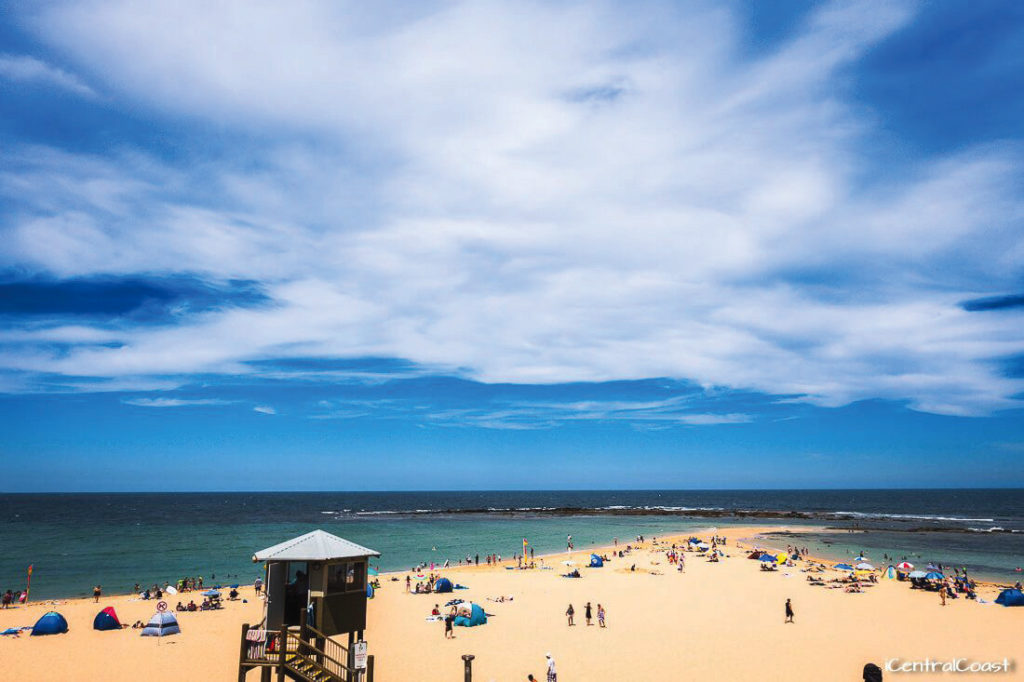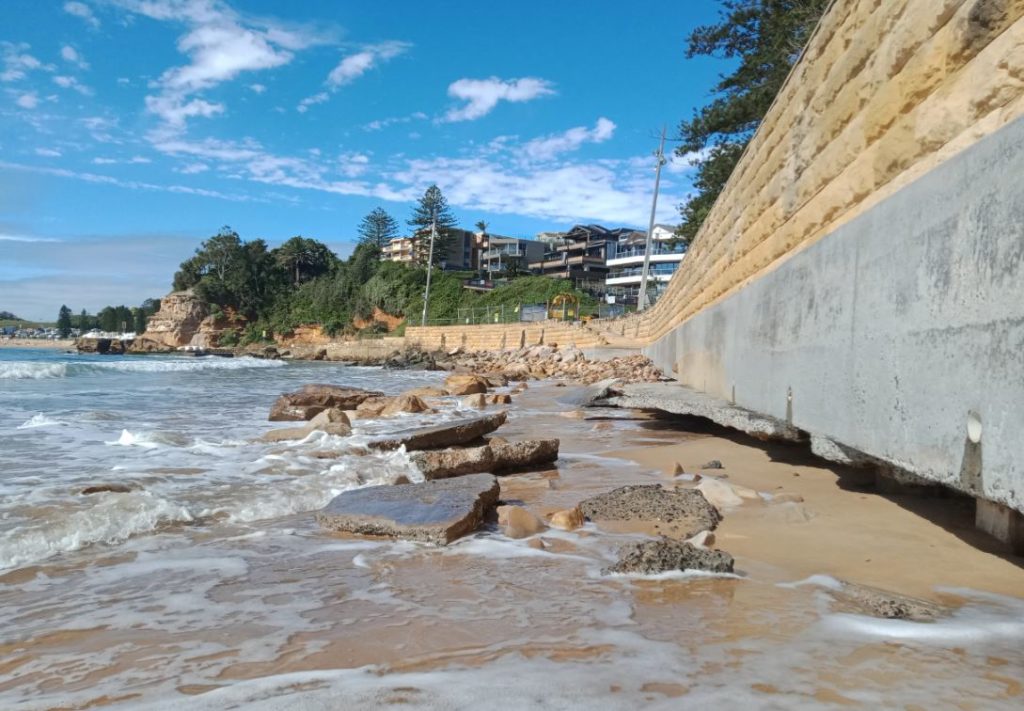Torrential rain and subsequent flooding have been reflected in the 2021-22 State of the Beaches Report, but 89 per cent of the waterways on the Central Coast are still rated as Good or Very Good.
The ratings for 2021–2022 are based on water quality data collected over the last two-four years, with rainfall over this period on the Central Coast extremely diverse.
Significant rain events in 2020 and2021 have impacted the results, along with very wet conditions in the region in November, 2021, when two- three times the monthly average rainfall was recorded on the Central Coast.
NSW experienced its wettest summer since 2011–2012, with above average summer rainfall along the coast, and heavy rains in February-March this year causing major flooding on the Central Coast.
Rainfall during April prompted an extreme wet weather pollution alert for the region.
Despite the trend, North Entrance beach was upgraded to Very Good as tidal flushing rapidly dispersed and diluted pollution inputs.
But Toowoon Bay was downgraded from Good to Poor and Terrigal Beach retained its Poor rating.

“Water quality at these sites was mostly suitable for swimming in dry weather conditions; however, elevated enterococci levels were occasionally recorded following little or no rain, and often after light rain,” the report says.
“The microbial water quality at Toowoon Bay and Terrigal Beach remains close to the threshold between Good and Poor, and these sites have fluctuated between Good and Poor in recent years.
“During 2019–2020 Central Coast Council, the then Department of Planning, Industry and Environment (DPIE) and the University of Technology Sydney investigated the scale and extent of elevated bacterial levels at Terrigal Beach.
“Council is using the findings from the investigation to detect and resolve water quality issues in the catchment.”
Davistown Baths, Pretty Beach Baths, Woy Woy Baths and Yattalunga Baths were among 20 estuarine beaches in the state to be graded as Poor, with elevated bacterial levels recorded following rainfall.
“Estuarine sites are generally not as well-flushed as ocean beaches, and so the time for pollution to disperse and dilute
is longer,” the report says.
Gwandalan, Chain Valley Bay and Mannering Park Baths, Lake Munmorah, Caton Beach and Wamberal, Terrigal, Avoca and Cockrone lagoons all retained their Poor rating.
All other waterways in the region retained Good or Very Good ratings.
Central Coast Council’s Director Environment and Planning, Alice Howe, said the annual report is an important resource to help Council manage water quality at swimming sites across the region.
“We all know what a challenging year it has been weather-wise, so it is pleasing that despite this 13 out of 15 ocean beaches (86 per cent) rated as Good or Very Good for water quality.
“This means water quality at these sites is suitable for swimming most of the time but can be susceptible to pollution following rainfall.
“Although Terrigal Beach and Toowoon Bay received a Poor rating for water quality – indicating that these areas are susceptible to faecal pollution, particularly after rainfall – the rating for both sites were at the better end of the Poor threshold.”

Howe said the report is a timely reminder that all ocean beaches can be affected by stormwater pollution for up to 24 hours after rain and swimming should be avoided in this time.
“Estuarine sites – such as our coastal lagoons, Brisbane Water, Tuggerah Lakes and Lake Macquarie – are particularly susceptible to stormwater pollution due to the slower natural flushing process and swimming is not recommended at these locations for three days after a rain event,” she said.
Howe said the report confirmed that high rainfall events can cause sewer system discharges and in estuaries, lakes and lagoons with a lower level of flushing, recovery from sewer system failures will be slower.
“In addition to this, Central Coast beaches have been significantly impacted by Hawkesbury River flood water,” she said.
“While microbial levels returned to normal at many swimming sites, there was still a large amount of debris or other hazards, such as murky water, which posed a risk to recreational activities.”
Howe said extensive audits and studies have been undertaken to identify the factors contributing to the poor water quality at Terrigal Beach, the surrounding coastal lagoons and other estuarine waterways and beaches.
“These have included water quality and sediment sampling, comprehensive inspections of both the stormwater and sewer systems, and microbial source tracking,” she said.
“A range of remedial actions have been undertaken by Council, including upgrades and renewal work to the sewer system, pump stations and sewage treatment plants.”
Director Environment and Planning, Alice Howe
“We also have CCTV monitoring of the sewer network to identify areas requiring maintenance
“To date 202 kilometres of sewer network have been monitored, with rehabilitation of sewer mains based on the condition assessments from the CCTV inspection program.
“In total 72 kilometres of sewer gravity mains have been relined to date.”
Council Administrator, Rik Hart, said while thr ereport was positive overall there is certainly room for improvement.
“We will continue to roll out a number of measures designed to improve water quality across the Coast,” he said.
The State of the Beaches report can be viewed at https://www.environment.nsw.gov.au/topics/water/beaches
Terry Collins



This is not correct. Read the whole report: of the 32 beaches, ocean pools, estuarine pools and lagoons on the Coast, one was very good, 15 were good and 15 were poor, so how can you report that 89 per cent of waterways were rated as good or very good? It’s council spin to say 89 per cent OF BEACHES only were good or better.